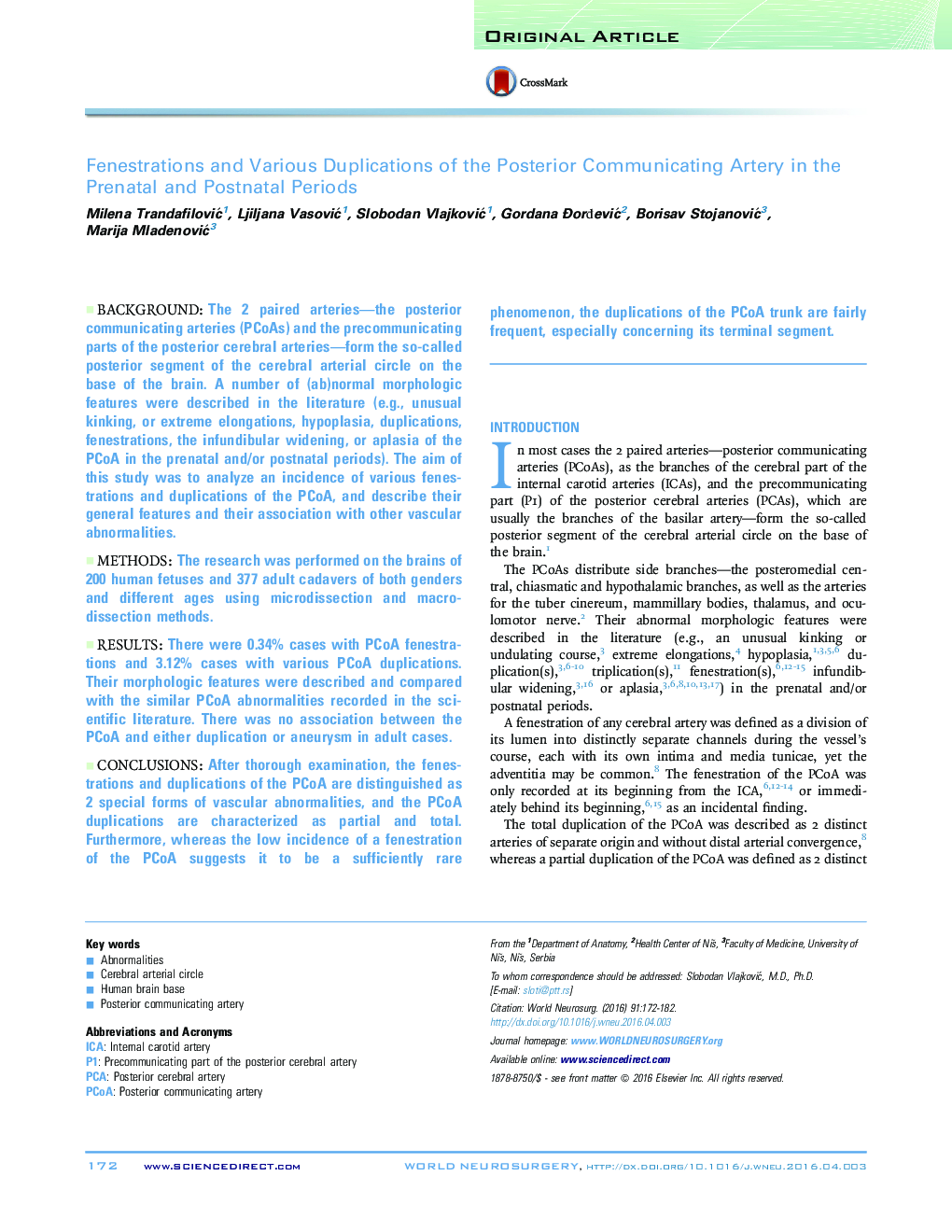| Article ID | Journal | Published Year | Pages | File Type |
|---|---|---|---|---|
| 3094540 | World Neurosurgery | 2016 | 11 Pages |
BackgroundThe 2 paired arteries—the posterior communicating arteries (PCoAs) and the precommunicating parts of the posterior cerebral arteries—form the so-called posterior segment of the cerebral arterial circle on the base of the brain. A number of (ab)normal morphologic features were described in the literature (e.g., unusual kinking, or extreme elongations, hypoplasia, duplications, fenestrations, the infundibular widening, or aplasia of the PCoA in the prenatal and/or postnatal periods). The aim of this study was to analyze an incidence of various fenestrations and duplications of the PCoA, and describe their general features and their association with other vascular abnormalities.MethodsThe research was performed on the brains of 200 human fetuses and 377 adult cadavers of both genders and different ages using microdissection and macrodissection methods.ResultsThere were 0.34% cases with PCoA fenestrations and 3.12% cases with various PCoA duplications. Their morphologic features were described and compared with the similar PCoA abnormalities recorded in the scientific literature. There was no association between the PCoA and either duplication or aneurysm in adult cases.ConclusionsAfter thorough examination, the fenestrations and duplications of the PCoA are distinguished as 2 special forms of vascular abnormalities, and the PCoA duplications are characterized as partial and total. Furthermore, whereas the low incidence of a fenestration of the PCoA suggests it to be a sufficiently rare phenomenon, the duplications of the PCoA trunk are fairly frequent, especially concerning its terminal segment.
